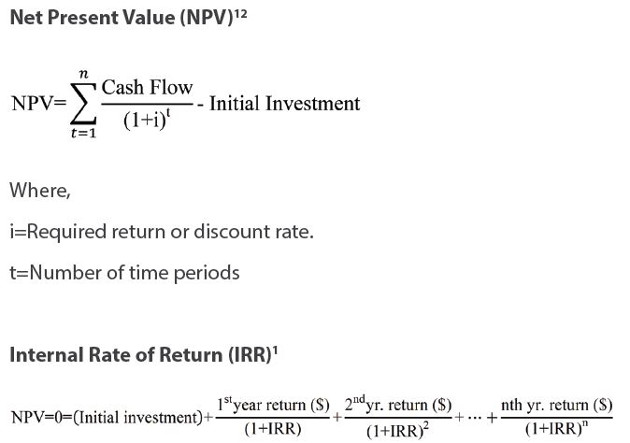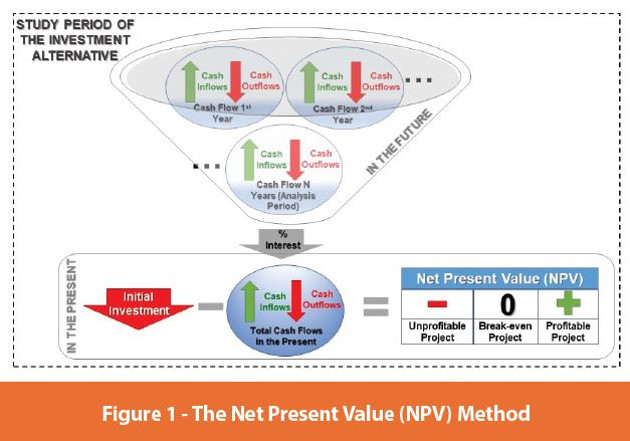Department of Industrial Engineering
Introduction
The presentation of a new Process Analytical Technology (PAT) application to a pharmaceutical company is often followed by the question: “But what is the business case?”, or request: “A stronger business case is needed”, or “The business case has to be clear”. The pharmaceutical scientist is often unprepared for this question and is only prepared to explain scientific/technological issues: the design of experiments proposed for process understanding and how a PAT method works. The scientist has studied the process thoroughly and is ready to explain the critical process parameter that is being monitored, the frequency with which measurements would be obtained, and possible control options. As the PAT methods are not easy to explain or understand, the scientist is often completely focused on the scientific aspects, and not the business case. The implementation of PAT will require a Capital Investment Project because it is often a large scale, long-term project and represents a large investment in time, personnel and overall resources, hence the importance of a well-structured business case. The approval of the capital project may take a year or more depending on the company and the complexity of the project. However, very few articles have addressed the importance of developing a strong business case to advance PAT implementation in industry.1, 2
In 2007, a case study was developed to evaluate the economic value potential of the deployment of PAT in pharmaceutical manufacturing operations, estimating the financial return on investments in PAT combined with Lean Manufacturing.2 This case study considered the impact on the profitability of a hypothetical mid-sized generic pharmaceutical manufacturer, through the analysis of industrial benchmarks and published data for publicly-traded companies.
The development of a business case for raw material identification using near infrared spectroscopy was presented in 2009, with a discussion of the associated costs.1 The proposed approach to building a business case was based on three key value added indicators: Net Present Value (NPV), Internal Rate of Return (IRR), and Return on Investment (ROI). The article emphasized that the project must exceed the growth strategy of each company to obtain approval from upper management. The Net Present Value (NPV) compares at the present time, the initial investment versus the cash flow in the future considering the return generated in the future, according to the project period. The Internal Rate of Return (IRR) is related to the NPV and corresponds to the percentage return of the project according to the future values. The Return on Investment (ROI) measures the profit with respect to the investment made and the expectations of the company.
This article summarizes the initial findings based on conversations with industry leaders following the customer discovery approach taught by the National Science Foundation I-Corps program.3, 4 The development of the PAT method is important, but the implementation and validation are equally important. All possible expenses, possible complications and unexpected costs must be considered. For example, PAT must be implemented within a company’s Quality System.5 Thus, the cost of modifying procedures and creating new procedures for PAT methods must be evaluated.
This article continues the journey to understand the business case for Process Analytical Technology, with emphasis on the application of fundamental industrial engineering concepts to understand the application of PAT within the pharmaceutical industry. PAT could facilitate the approval of a product. As an example, PAT could involve in-line monitoring of blending to meet the Critical Quality Attribute (CQA) of content uniformity, which is linked to product safety and efficacy.6, 7 The business case should also consider the costs of bringing the methods from R&D to manufacturing to achieve a successful transfer.8
A PAT project could also be proposed by a pharmaceutical manufacturing site after a product is approved.9 Business cases in pharmaceutical manufacturing include a cost analysis considering: the investment in PAT instruments, software and facilities, validating and implementing the method, changes in procedures, and the proper documentation and evaluation of the data obtained. The business case also involves an evaluation of the possible benefits, and risk analysis (what is the probability of the project occurring successfully? - on time, and without exceeding the cost estimates). This is a team eff ort as it will involve a number of business units, and the costs are often charged to the budgets of one or more units. The manufacturing plant is often concerned that a PAT method would be increasing the cost of the product. The business case has to be clear to facilitate its presentation to higher management and gain approval.
Key Aspects in the Implementation of PAT in the Pharmaceutical Industry
The Deming or PDCA (Plan-Do-Check-Act) cycle is recommended for the implementation of PAT.10 The PDCA cycle is suitable since the objective of PAT is to facilitate continuous improvement. The Plan must include the establishment of a PAT Team composed of personnel from multiple disciplines. The team will require expertise in the real time analytical chemistry and chemometrics, process knowledge, and personnel with the ability to analyze the economic factors associated with the project.11 The second step, Do, corresponds to applying the structured plan, training the personnel in the new technologies, the acquired equipment and procedures. Performing checks (Step 3 in PDCA Cycle) throughout the implementation process, in order to verify that what was projected is being applied and make needed changes to meet the objective of the PAT project. In Act, the last step in the cycle, the results of step 3 are analyzed setting the modifications of the PAT implementation and starting the cycle again.
Key Economic Analysis Tools1 for PAT Implementation
The basic structure of the Business Case includes the costs, benefits of the project, risk analysis, and methods to determine the performance of the project as a function of the return on the investment. PAT does not directly add value to the manufacturing operation.2 The gains from PAT depend on its integration into the Quality System and Lean Manufacturing. The benefits of the project often include a reduction of QC laboratory testing costs, and product release could be accelerated thanks to the real time monitoring of the process. PAT is also based on the tenet that as process understanding increases, the risk of producing a poor product decreases. PAT could be used to avoid over drying an active pharmaceutical ingredient, or assuring the adequate blending of a formulation.6, 9 Thus, PAT can contribute to a reduction of quality related problems.
Subscribe to our e-Newsletters
Stay up to date with the latest news, articles, and events. Plus, get special offers
from American Pharmaceutical Review – all delivered right to your inbox! Sign up now!
The Net Present Value (NPV) method consists of the difference between the initial investment and the equivalency of the future cash flows at the present time. Figure 1 presents a graphical representation of this concept.1 If the NPV of the alternative is positive, the PAT project is considered profitable because the future value of the earnings is larger than the future payments. An NPV equal to zero (0) represents the break-even point of the project where the investment alternative does not represent a profit or a loss at a given interest or hurdle rate. A negative NPV means that the project is unprofitable because it would generate losses for the company. NPV, IRR and ROI are evaluated together and if they exceed the investment metrics established by the company, they will provide convincing support for the approval of the structured business case.1 A positive return will not be sufficient. The project must meet expectations for growth, which will vary among companies. The formulas associated to these methods are the following:



The implementation of PAT will require a Capital Investment Project because it is a large scale and long-term project and represents a large investment in time, personnel and overall resources and hence the importance of a well-structured business case. The company may first fund a feasibility study to determine whether the application is possible and become more familiar with the proposed application. The feasibility helps to estimate the method development costs. The feasibility study may involve academic research groups that already have specialized knowledge of PAT methods, or may involve equipment lease or loan from an instrument vendor. The feasibility study helps reduce the risks associated with the project. The project may be restructured following the feasibility study, helping the company to optimize the use of resources.
Conclusion
This article has summarized some of the key elements in the business case, or justification of PAT projects. The authors want to emphasize the importance of the justification of PAT projects. Investments to improve pharmaceutical manufacturing through PAT or emerging technologies first require the justification of the project, the development of a business case as discussed in this article.
Acknowledgement
The authors thank to the U.S. Economic Development Administration (EDA) funding through Investment No.: 01-79-14889 for project support, and several pharmaceutical industry leaders who have provided insight on the development of a business case.
References
- Freeman SC, Gujral B and Rufi no D. Building a Business Case for PAT. Pharma Manufacturing, https://www.pharmamanufacturing.com/articles/2007/148/ (2007).
- Cogdill RP, Knight TP, Anderson CA, et al. The Financial Returns on Investments in Process Analytical Technology and Lean Manufacturing: Benchmarks and Case Study. J Pharm Innov 2007; 2: 38-50. DOI: 10.1007/s12247-007-9007-x.
- Constable G and Rimalovsky F. Talking to Humans. First ed.: Giff Constable, 2014.
- Pinzon de la Rosa C, Rodriguez V, Hormaza ML, et al. TOS MEETS THE NSF I-CORPS™ PROGRAM. In: 8th World Conference on Sampling and Blending Perth, Australia, 2017 2017, pp.351-354. Australian Institute of Mining and Metallurgy.
- U.S. Department of Health and Human Services FDA. Guidance for Industry - PAT A Framework for Innovative Pharmaceutical Development, Manufacturing, and Quality Assurance. 2004, p. 1-19.
- Corredor C, Lozano R, Bu X, et al. Analytical Method Quality by Design for an On-Line Near-Infrared Method to Monitor Blend Potency and Uniformity. J Pharm Innov 2015; 10: 47-55. DOI: 10.1007/s12247-014-9205-2.
- Hetrick EM, Shi Z, Barnes LE, et al. Development of Near Infrared Spectroscopy-based Process Monitoring Methodology for Pharmaceutical Continuous Manufacturing Using an Offline Calibration Approach. Anal Chem 2017; 89: 9175-9183. DOI: 10.1021/acs. analchem.7b01907.
- Alvarado-Hernández BB, Scicolone JV, Ortega-Zuniga C, et al. Method transfer of a near infrared spectroscopic method for blend uniformity in a poorly flowing and hygroscopic blend. J Pharm Biomed Anal 2020; 180: 113054. DOI: https://doi.org/10.1016/j.jpba.2019.113054.
- Vargas JM, Nielsen S, Cárdenas V, et al. Process analytical technology in continuous manufacturing of a commercial pharmaceutical product. Int J Pharm 2018; 538: 167-178. DOI: https://doi.org/10.1016/j.ijpharm.2018.01.003.
- Sokovic M, Pavletic D and & Pipan KK. Quality improvement methodologies–PDCA cycle, RADAR matrix, DMAIC and DFSS. Journal of achievements in materials and manufacturing engineering 2010; 43: 476-483.
- Romañach RJ. PAT- A Team Eff ort. Pharmaceutical Technology Europe 2008; 20: 44-46.
- Newman DG, Eschenbach TG and Lavelle JP. Engineering Economic Analysis. 13 ed.: Oxford University Press, 2017, p.740.
About the Authors
Maria A. Fontalvo-Lascano is currently an M.S. student in the Department of Industrial Engineering at UPR-Mayagüez focused in Cost Modeling, Quality control and Quality Assurance. She completed her B.S. in Industrial Engineering at the Universidad del Atlántico. Email: [email protected]
Mayra I. Méndez-Piñero, Ph.D. is Professor of Industrial Engineering at UPR-Mayagüez. Her research is focused in Cost Analysis and Control, Cost Modeling, Engineering Economy. Email: [email protected]
Rodolfo J. Romañach, Ph.D. is Professor of Chemistry and Site Leader for the Engineering Research Center for Structured Organic Particulate Systems at Mayagüez. His research is focused in understanding the sources of error in near infrared spectroscopic methods, and in working with industry in the implementation of PAT methods. Email: [email protected].